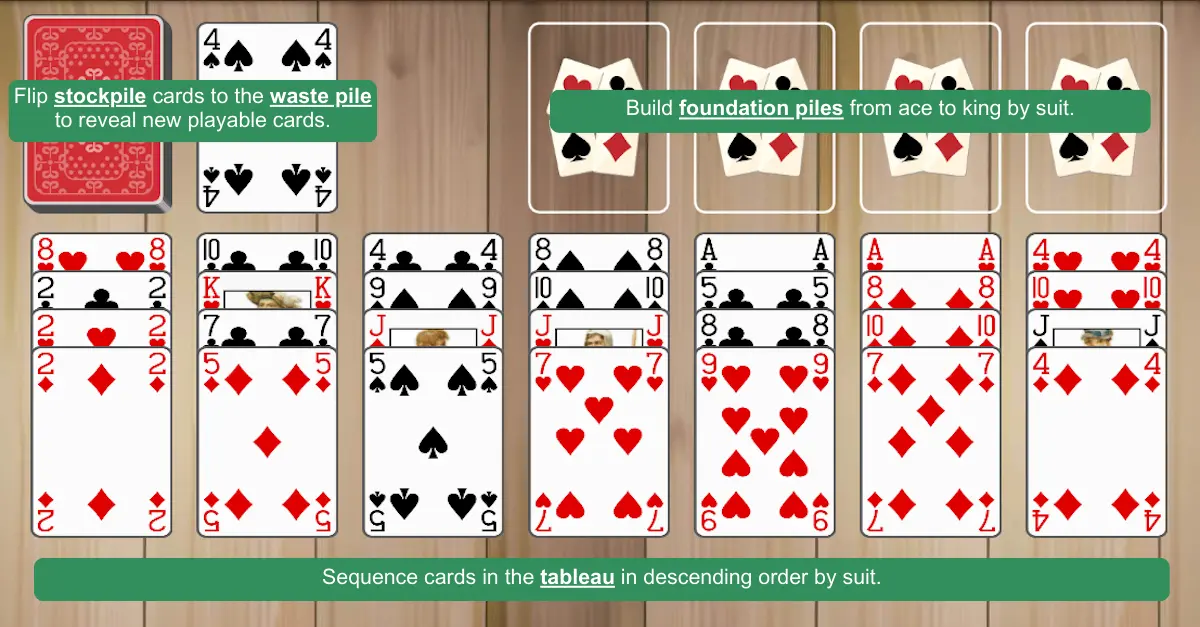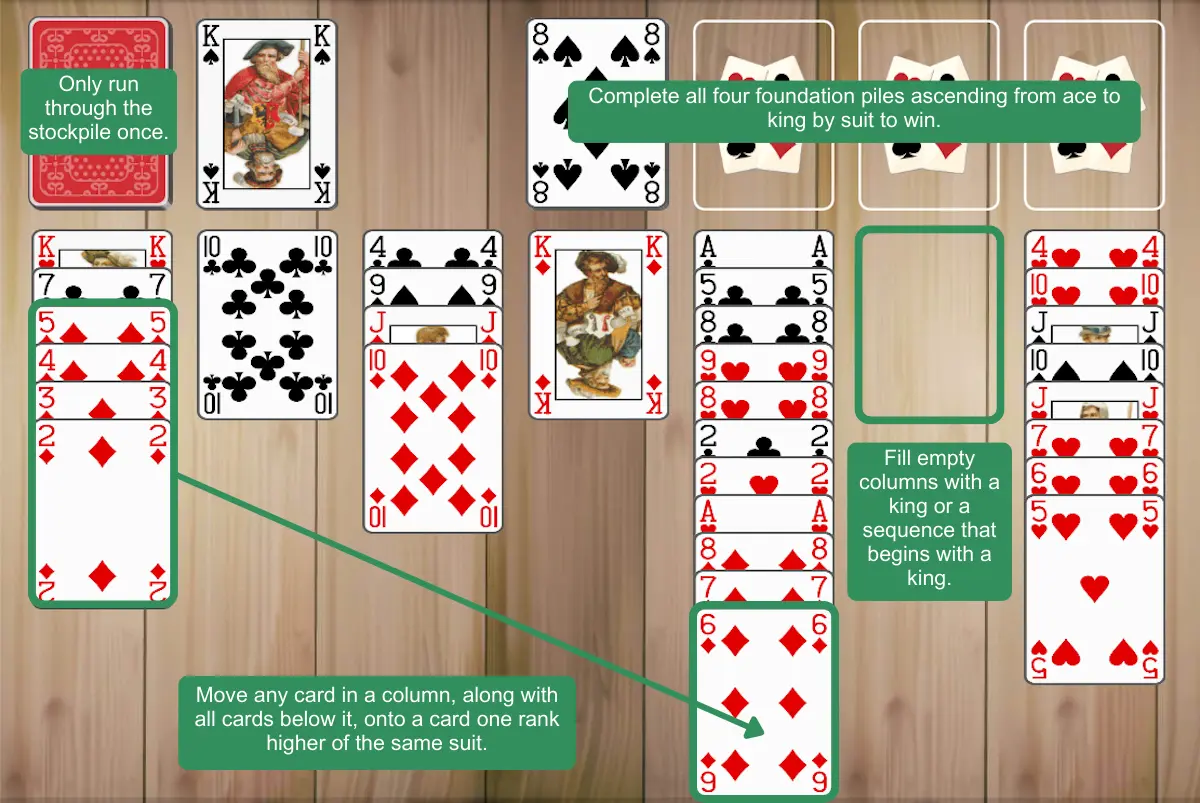Australian Patience Objective
The goal of Australian Patience, or Australian Solitaire, is to complete all four foundation piles, ascending
from ace to king by suit.
Australian Patience Setup
The game uses a standard 52-card deck and is separated into four areas:

-
Tableau: The tableau consists of seven columns of four face-up cards each. Arrange cards here in
descending order by suit.
-
Stockpile: The remaining 24 cards form the stockpile. You can only run through the stockpile once.
-
Waste pile: Stockpile cards are flipped face up into the waste pile. The top waste pile card can be
played into the tableau or a foundation pile.
-
Foundation piles: Complete the four foundation piles by building them from ace to king by suit to win
the game.
Australian Patience Rules

-
Move any card in a column onto another card that is one rank higher and the same suit. When you move
a card, all the cards stacked below it move together as a group even if it’s not properly sequenced.
- Build foundation piles from ace to king by suit.
-
Cycle through the stockpile once. After you flip all 24 cards into the waste pile, you can’t reuse
the stockpile.
- Only kings can be placed in empty tableau columns.
- Use waste pile cards in the tableau or foundation piles to help you further gameplay.
Australian Patience Strategies
-
Prioritize freeing aces and cards that can be placed onto foundations. The earlier you get these onto
the foundations, the easier it is to build your piles and reduce clutter from the tableau.
-
Avoid placing higher ranking cards below lower ranking cards of the same suit in a column. This could
make it difficult to properly sequence the cards later because the lower ranked card cannot be moved to the
bottom of its own column.
-
Use empty columns wisely. Only kings can fill empty columns, so don’t move a king into an empty space
unless it will provide a clear strategic advantage, like freeing other cards or starting a new sequence.
-
Play waste pile cards as soon as possible. Because you can’t cycle through the stockpile again, if
waste pile cards get buried it can be difficult to free them and complete your foundation piles.
If you find Australian Patience too challenging, you can try
Easy Australian Patience, which allows two
passes through the stockpile. And for more of a challenge try
Yukon Solitaire or other Yukon variations.




